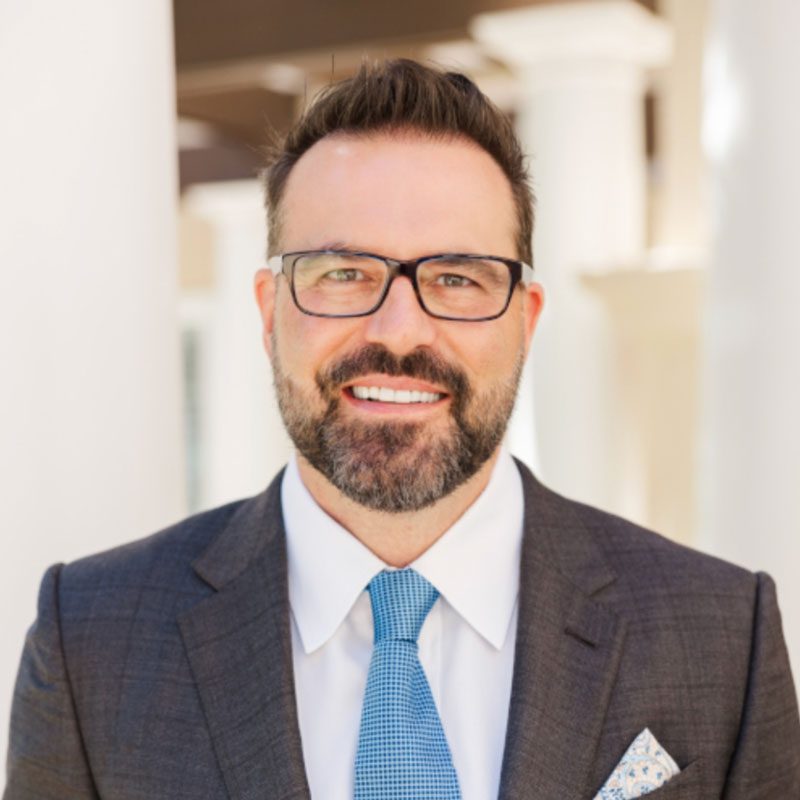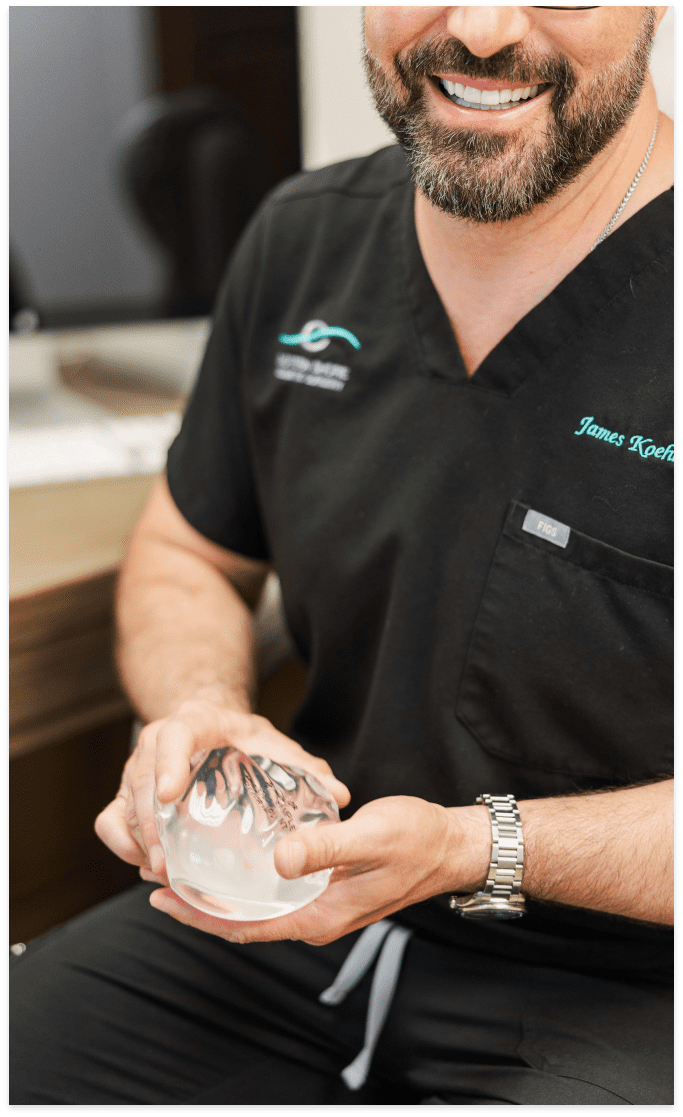Synmastia/
Symmastia
Synmastia/Symmastia
Breast implant revision surgery can be performed for a number of reasons, one of which is synmastia (sometimes denoted as symmastia). This “uniboob” deformity occurs when the tissue separating the breasts is compromised, and the implants join together in the middle of the chest. In some rare cases, women may develop synmastia due to genetics, but most often the term is used to refer to a malpositioning of breast implants.
Synmastia can be corrected through the creation of two distinct surgical pockets to better support and separate your breast implants. Recognized as a breast implant revision specialist, Dr. James Koehler is a board certified cosmetic surgeon serving patients from Gulfport to Gulf Shores and beyond. Dr. Koehler offers a wide range of plastic surgery procedures for both men and women, and is known for his caring commitment to a patient-first approach.
Are You a Candidate?
If your cleavage is non-existent because your breasts are pushed together over the midline of your chest, then you may be a candidate for synmastia repair. You should also be in good overall physical and mental health, and have realistic expectations about the outcome of the procedure. During your consultation, Dr. Koehler will go over all your options to help ensure that you’re a good candidate for breast implant revision before proceeding with surgery.
About Synmastia/Symmastia
Your existing breasts should have a natural separation between them, which can be quite wide in some women or very narrow in others, but is rarely altogether absent. After your breast augmentation, this separation should still be roughly the same distance. In some cases, though, the implants become positioned incorrectly and touch in the middle, giving the appearance of one long breast.
There are several reasons synmastia can occur:
- Overdissection of the surgical pocket during your earlier breast enlargement procedure compromises the strength and integrity of the tissues that keep the implants apart. This can make the support tissues too weak to maintain proper implant placement, or the pocket may tear. This occurs most often in subglandular placement, and is typically the result of an overaggressive surgical technique or a technical problem during implant placement.
- Overdissection of the pectoral muscle insertion that runs along the sternum when implants are placed below the muscle, which leads to synmastia for the same reason as overdissection of the surgical pocket: the supportive tissues can no longer keep implants separate. Again, this is most commonly the result of surgical miscalculation.
- The use of breast implants that are too wide compared to the patient’s natural chest structure can cause synmastia, and women with existing chest deformities have a higher risk of synmastia due to anatomical reasons.
- Bigger implants, when properly positioned, aren’t more likely to end up moving toward the middle of your chest than small implants provided your soft tissues are adequate for the size of implant you are choosing. Since larger implants require larger surgical pockets, the combination of a significant increase in cup size plus or technical problems with the surgery could lead to synmastia.
Synmastia is usually diagnosed by your cosmetic surgeon, although there are a few telltale signs you may notice on your own that could indicate a problem; for example, if your breasts touch in the middle or if your skin looks “tented” between the breasts. You can test for synmastia by pressing your finger to your breastbone and noticing if your implants separate, then spring back toward the middle when you lift your finger again. When implants are properly positioned, they should be centered underneath your nipple, so nipples that seem to point outward or sit too far apart could also indicate the presence of synmastia.
The only treatment for improving the appearance of synmastia is surgery, although some women may wear a special separator bra under their clothing as a temporary solution. Revision surgery to correct synmastia is not as simple as downsizing to a smaller implant, because new surgical pockets have to be created or the existing pockets will require repair.
What to Expect
Synmastia repair beings the same way as any breast revision procedure: by scheduling a consultation with Dr. Koehler. During your consultation, he’ll conduct a physical exam and discuss in detail with you what you should expect from your surgery, your likely results and also the hopes you have for the procedure.
The specific surgical technique that Dr. Koehler uses in your synmastia repair depends on a number of factors, including your existing implant placement, your natural breast position and whether you want to maintain the same implant size. Typically, Dr. Koehler can create incisions following those used in your earlier breast augmentation, preventing unnecessary scarring.
The primary concern in synmastia correction is to ensure that the surgical pockets are capable of holding the implants in the correct placement. To do this, Dr. Koehler may repair and strengthen the damaged pockets using acellular dermal matrix (eg. Strattice), or create new pockets entirely. In either case, he takes great care to ensure that your results will be long-lasting.

Dr. Koehler

Educated at the University of Alabama and in practice for over 20 years, Dr. Koehler is a board-certified cosmetic surgeon who is devoted to providing exceptional results.


Risks and Complications
The risks associated with breast revision surgery for synmastia are similar to the risks that can occur in a standard breast augmentation, such as infection or bleeding. The most common risk is that of synmastia recurrence, although this concern is greatly reduced when the surgery is performed by a qualified cosmetic surgeon with extensive experience specifically in synmastia repair. Dr. Koehler will go over all the risks and benefits with you before your surgery so you’re fully informed about what to expect.
Your New Look
Recover after your synmastia repair should feel similar to what you experienced following your initial breast augmentation. Dr. Koehler may ask you to wear a special bra to help keep your breasts separated in the early days of the healing process. The bra will ensure that you see a difference in your figure right away, although you may notice some swelling and discomfort at first. Over time, the primary benefit that women notice after synmastia repair surgery is a feeling of renewed self-confidence, along with relief that you can finally enjoy the beautiful breast augmentation results that you deserve.



 (251) 929 7850
(251) 929 7850


 Facebook
Facebook Instagram
Instagram Realself
Realself